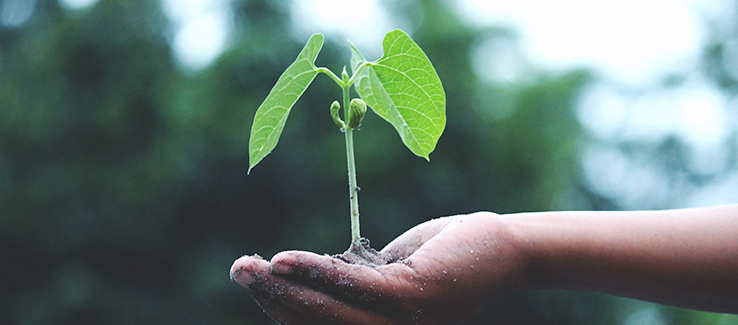Caring for New Saplings
There are many reasons why homeowners may want to plant trees in their yard. Not only do trees add beauty to a landscape, they also have a myriad of benefits, such as offering shade, privacy, and depending on the type of tree you choose to plant, possibly even fresh fruit. The demand for a great landscape has allowed the landscaping industry to reap $81 billion annually. This has led to many new landscaping companies popping up, offering services ranging from grass cutting, planting trees, and installing flower beds to designing entire custom gardens. However, these services can often be expensive, and if you have the time and are willing to put in the effort, why not try planting and caring for a new sapling yourself? Here are some tips to remember when planting and growing a new tree:
When and where
While you may be excited to plant your saplings as soon as you get them, you must first take into consideration whether it’s the best time or season to do so. You wouldn’t want to freeze or scorch your saplings’ delicate young roots. To give your young trees the best chance to grow plant them during spring or fall. This is due to the mild weather that will allow your trees to establish their roots, making it easier for them to adjust to extreme weather.
As for where to plant them, make sure to find an open and sunny spot in your yard, that will provide plenty of space for their root system and canopy to stretch out, as they mature to fully developed trees. Find a location that is 10 to 20 feet away from your home to avoid root damage to your property.
Watering
Watering is an important part of taking care of any newly planted tree, because it helps them flourish and maintain steady growth. As such, the soil where your saplings are planted should be kept moist at all times, to encourage vigorous growth. Young trees require more watering than older, well-established trees, because their young roots don’t allow them to store as much water.
Water your newly planted trees every day for the first two weeks. Following that, you may water them once a week for the first year, and then after that, every other week. Make sure to water slowly and deeply to effectively get the water all the way to the roots. Lastly, the best time to water your trees is in the early morning, while it is still cool.
Pruning
As your tree grows, pruning regularly will be essential to help it have a healthy and even growth pattern. The best time to prune your trees is late winter or early spring. But you should hold off on significantly trimming your trees for at least a year, because trimming too much could end up limiting their growth potential, and make them more vulnerable to pests and diseases. If you see any broken, defected or damaged branches you may trim them away to prevent future issues, just be careful not to over-prune your trees.
Fertilizing
Though fertilization isn’t always necessary when it comes to caring for your trees, it helps trees stay healthy and vigorous by providing nutrients that boosts their growth rates. A good fertilizer can also help trees fight off diseases and adjust to environmental stress more easily. Young saplings require only small applications of quick release fertilizer, due to their sensitive roots. We hope that the above tips will give you a head start in caring for your new saplings. Growing a tree is one of the most satisfying things a nature lover can do.
Image: Pexels

